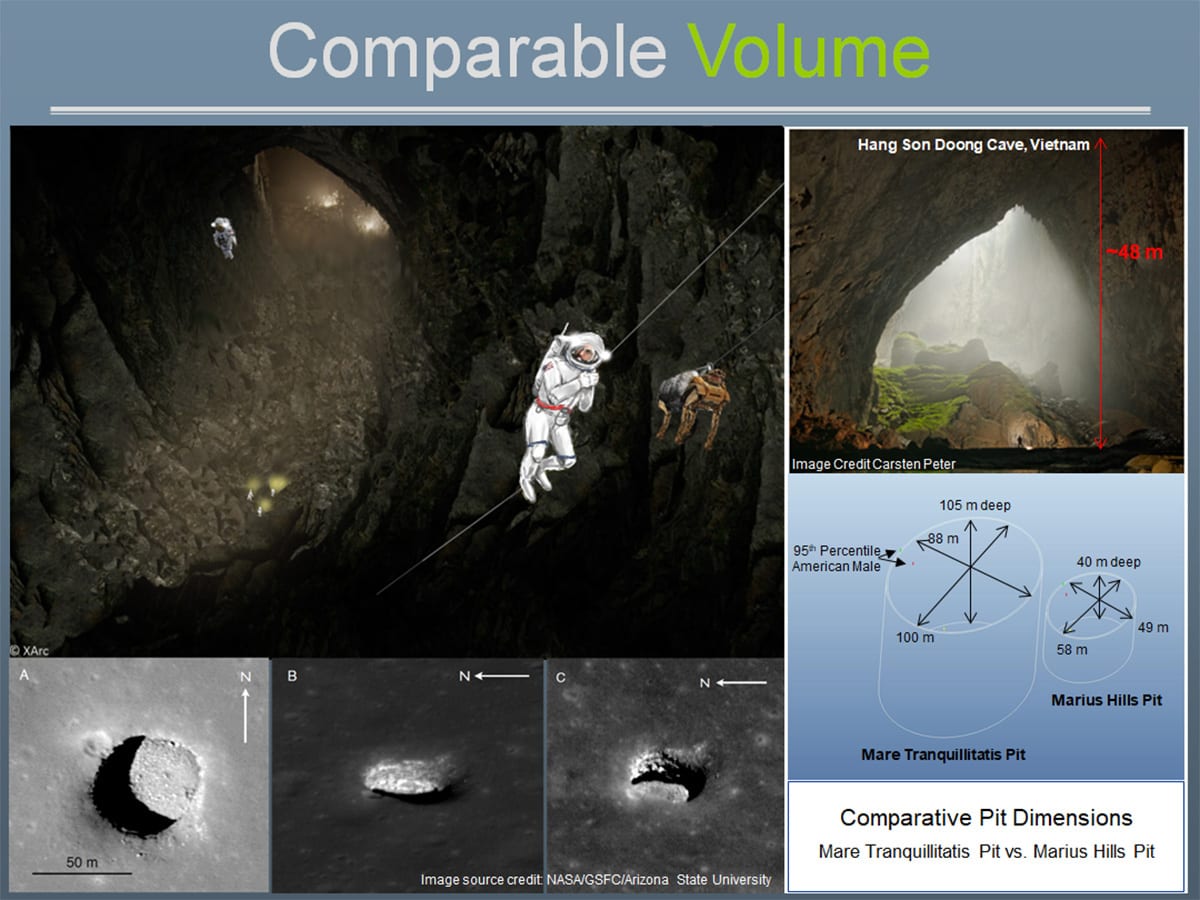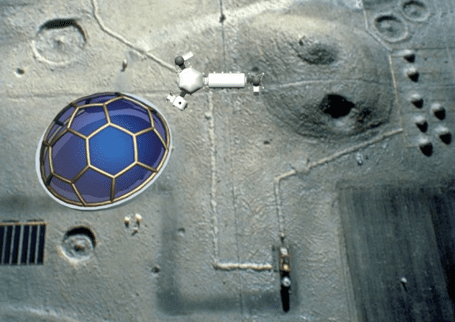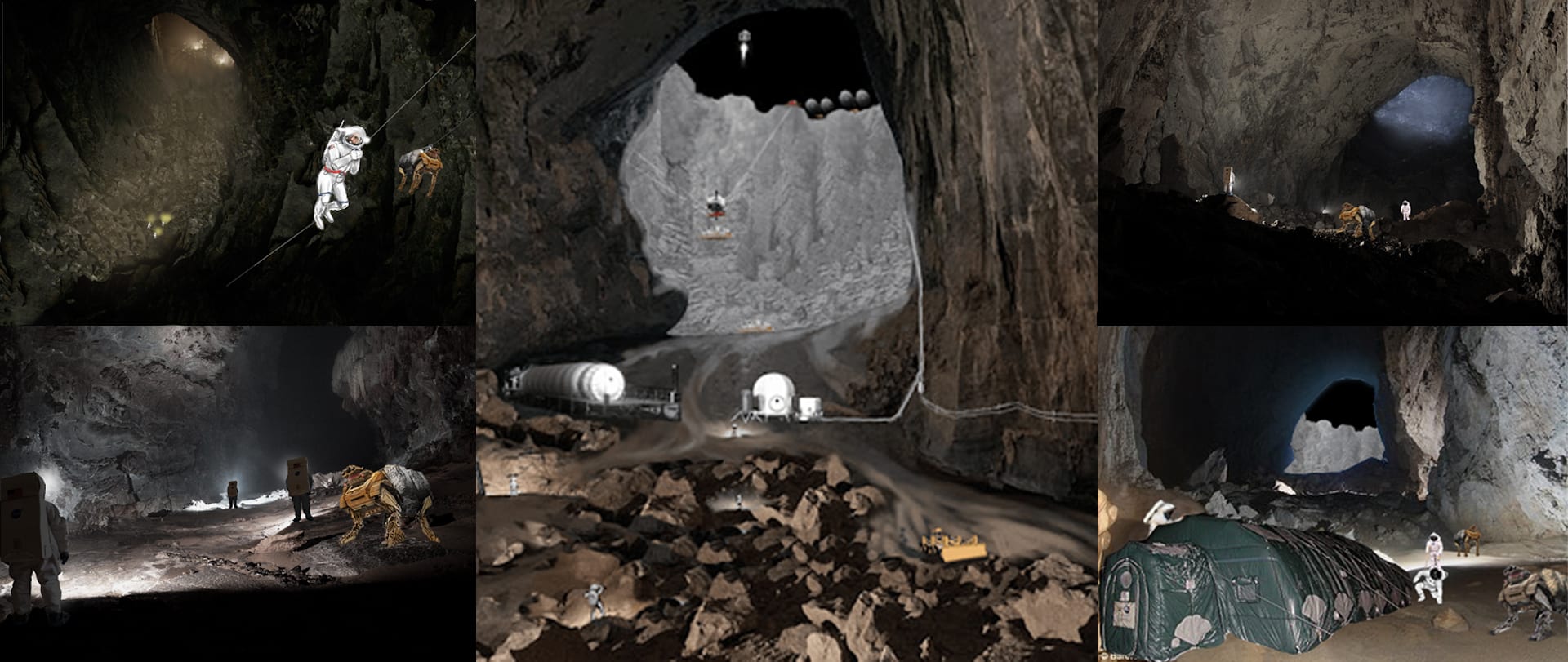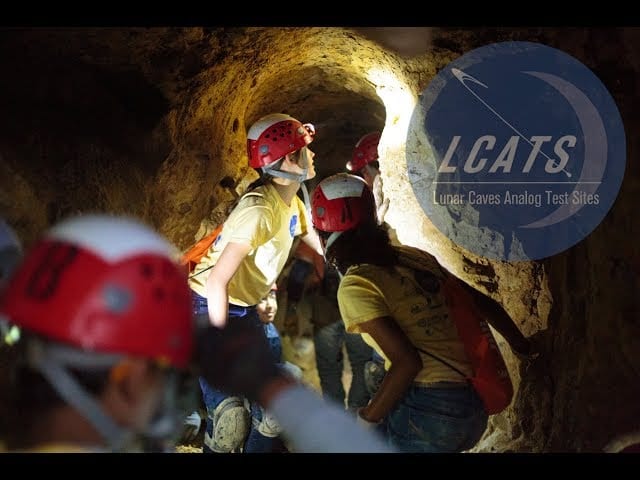The pit was first discovered by JAXA’s Selene mission in 2009. Pit walls reveal basalt stratigraphy.
Image source credit: NASA/GSFC/Arizona State University.
Characterization of pit, slopes, and landforms is crucial for determining field traverses and approach routes to the pit skylight. XArc is developing modeling and visualization tools to aid in:
- Site imaging and characterization, and traverse mapping for robotic and human exploration missions
- Terrain database and topographic mapping for digital elevation models (DEM) or digital terrain modeling (DTM), and morphological characterization
- Visualization products
By developing MHP as a framework for planetary cave research, we improve the understanding of lava tube pits and other sublunarean voids. Detailed geologic analysis and mapping can identify mineralogical resources, ore bodies, or an accumulation of volatiles in the vicinity of or within the pit or void. The commercial and habitation potential of the site becomes increasingly attractive if a prospective mining operation can be justified for the region.









